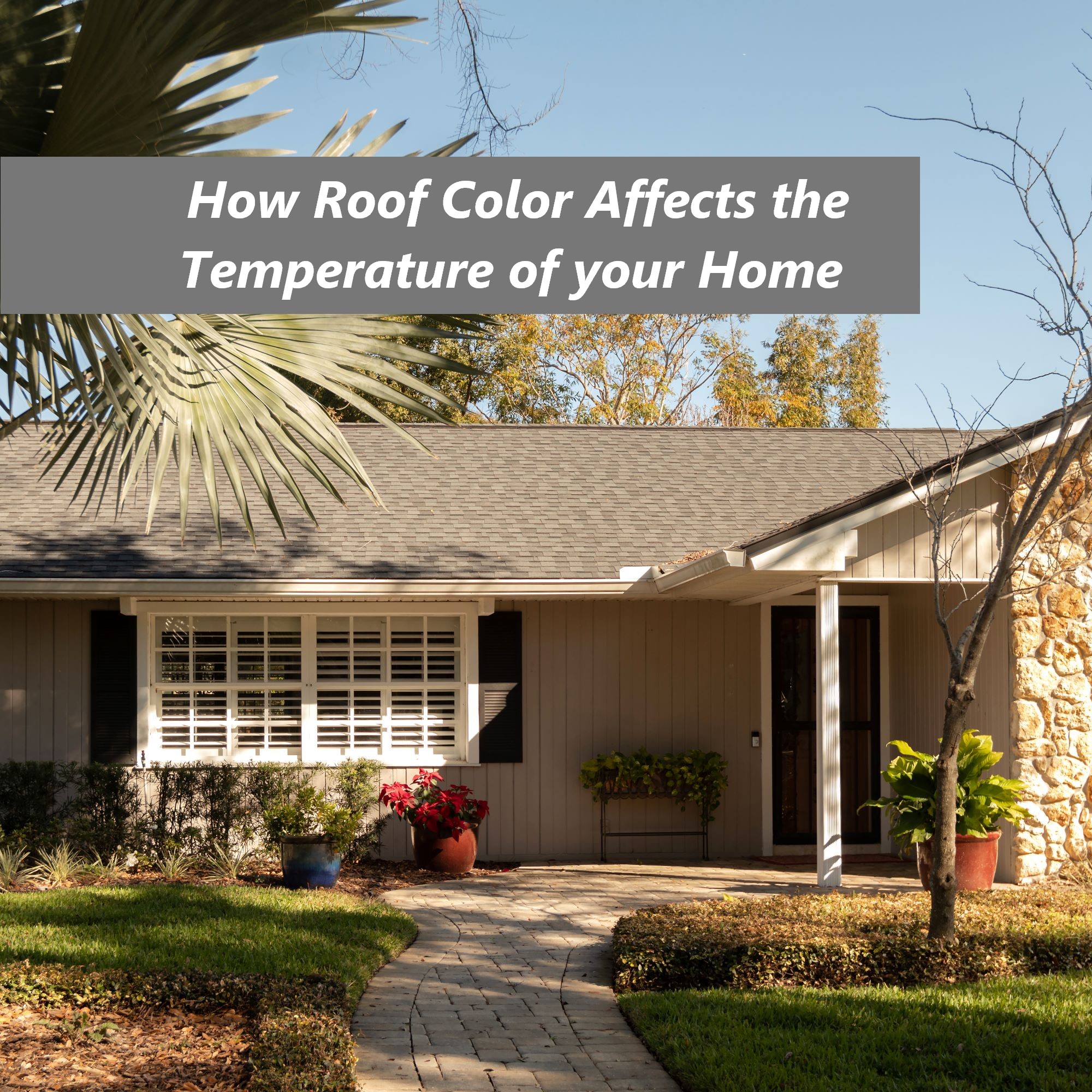
10 Jul How Roof Color Affects the Temperature of Your House

But something most people don’t know is that your roof can determine a lot of how outside temperature influences the temperature of the inside of your house. During the summer, your roof could reach up to 150°F if you have a standard or dark roof. With a lighter-colored roof under the same conditions, temperatures could stay around 50°F cooler. And with the Florida heat of the summer, the difference in those temperatures can mean a lot, both in the comfort of your home and how hard your air conditioning has to work.
The Cool Roof
The name ‘cool roof’ doesn’t necessarily mean it’s the coolest among the neighborhood’s roofs – but that it has qualities that can keep a house cool from the outside temperature. Energy.gov describes a cool roof as being designed to reflect more sunlight and absorb less heat than a standard roof, typically by being from highly reflective type of paint, a sheet covering, or highly reflective tiles or shingles.
What Are the Benefits to a Cool Roof?
- By keeping the roof temperature down, you are ultimately saving money and energy by using less of your air conditioning.
- Improving indoor comfort for spaces that are not air conditioned, such as garages or covered patios
- Decreasing roof temperature, which may extend roof service life.
Dark Roofs
When you have a dark roof, heat outside can raise the temperature inside your home’s highest rooms. To compensate, your cooling system has to work harder to reach your desired inside temperature, leading to those higher energy bills we typically see in the summer.
However, the opposite conditions hold true during the winter. A dark roof draws in more desired heat from the sun than a light roof. This feature makes dark roofs advantageous in colder climates with long winters and short summers – which isn’t typical with Florida seasons.
Want to Learn More About Improving Your Roof?
Get a free inspection and estimate by our expert roofers. With 26 years in replacing Florida roofs, we stand by giving honest advice, custom experiences, and quality product and installation.
Contact Universal Roof & Contracting at (407) 901-4444 or visit us online to request an estimate for your replacement roof today.
Follow us on social media!



